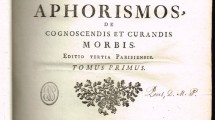Abstract
Following his defeat at Waterloo on June 18th, 1815, Napoleon returned to Paris. As he had come to dislike the Tuileries, which had no private gardens, he retired to the seclusion of the Elysée Palace, where he abdicated. He was joined by Hortense, ex-Queen of Holland, who was both his step-daughter, being a daughter of Josephine, and his sister-in-law, having been married to, but now separated from his brother, Louis Bonaparte. After days of vacillation, on June 25th, he secretly drove in a carriage, with blinds drawn, to Malmaison, eight miles from Paris, the home of his divorced wife Josephine, who had died about one year previously while he was in exile in the island of Elba. On his journey, he drove up the Avenue des Champs Elysées, crossed at the Etoile and turned on the rough patch of ground—stones, sand, and wild thickets—where they had begun to lay the foundations of the Arc de Triomphe. Some twenty-five years later, on December 15th, 1840, his coffin was borne triumphantly beneath this same arch on its way to the Invalides. Whilst at Malmaison, he decided to flee the country and, if possible, to escape to America. The French Provisional Government reluctantly agreed to place two ships, the Saale and the Meduse, then at anchor in the harbour of Rochefort, at his disposal.
Similar content being viewed by others
Bibliography
Aubry, Octave. St. Helena. Victor Gollancz, 1937.
Chaplin, A. A St. Helena Who’s Who. A. Humphreys, London, 1919
Chaplin, Dr. A. Thomas Shortt and biographies of some medical men associated with the case of Napoleon from 1815–1821. London, 1914.
De St. M. Watson, G. L. The story of Napoleon’s Death Mask. The Bodley Head, London.
De Veauce, Eugene. L’Affaire Du Masque De Napoleon. 1957.
Forsyth, William. History of the Captivity of Napoleon at St. Helena. John Murray, London, 1853.
Fremeaux, Paul. St. Helena. Andrew Melrose, London, 1910.
Gourgaud, General: The St. Helena Journal of General Gourgaud. Bodley Head, London, 1932.
Henry, Walter. Events of a Military Life. 1843.
Hogan, William. Personal communication.
Kemble, James. Napoleon Immortal. John Murray, London, 1959.
Manceron, Claude. Which Way to Turn. Jonathan Cape. London, 1961.
Markham, Felix. Napoleon. Weidenfeld and Nicholson. London, 1963.
O’Meara, B. Napoleon in exile, or A Voice from St. Helena. London, 1823.
Roseberry, Lord. Napoleon, the last phase. A. L. Humphreys. London, 1900.
Young, Norwood. Napoleon in exile on St. Helena (1815–1821). Stanley Paul, 1915.
Author information
Authors and Affiliations
Rights and permissions
About this article
Cite this article
Wilson, D.J. Royal academy of medicine in Ireland section of the history of medicine. I.J.M.S. 140, 30–44 (1971). https://doi.org/10.1007/BF02937771
Issue Date:
DOI: https://doi.org/10.1007/BF02937771




